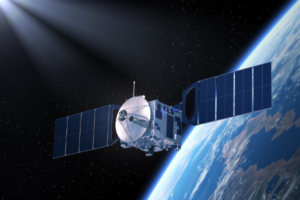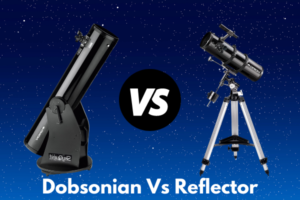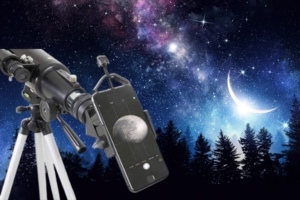All About Saturn; The Rings, Moons & The Surface
Saturn, second largest planet of the solar system in mass and size and the sixth nearest planet in distance to the Sun. In the night sky Saturn is easily visible to the unaided eye as a non-twinkling point of light.
When viewed through even a small telescope, the planet encircled by its magnificent rings is arguably the most sublime object in the solar system.
The farthest planet from Earth discovered by the unaided human eye, Saturn has been known since ancient times. The planet is named for the Roman god of agriculture and wealth, who was also the father of Jupiter.
Key Takeaways:
- Saturn is made mostly of hydrogen and helium and its volume is 755 times greater than that of Earth.
- As a gas giant, Saturn doesn’t have a true surface.
- Saturn’s ring system is the most extensive and complex in the solar system, extending hundreds of thousands of kilometers from the planet.
- The largest ring spans 7,000 times the diameter of the planet.
- Saturn has at least 62 moons. The largest, Titan, is slightly larger than Mercury.
- Saturn’s magnetic field is smaller than Jupiter’s but still 578 times as powerful as Earth’s.

Saturn’s Structure
Like Jupiter, Saturn is made mostly of hydrogen and helium. Its volume is 755 times greater than that of Earth. Winds in the upper atmosphere reach 1,600 feet (500 meters) per second in the equatorial region.
These superfast winds, combined with heat rising from within the planet’s interior, cause the yellow and gold bands visible in the atmosphere.
Saturn’s volume is greater than 760 Earths, and it is the second most massive planet in the solar system, about 95 times Earth’s mass. The Ringed Planet is the least dense of all the planets, and is the only one less dense than water.
Saturn’s Surface
As a gas giant, Saturn doesn’t have a true surface. The planet is mostly swirling gases and liquids deeper down. While a spacecraft would have nowhere to land on Saturn, it wouldn’t be able to fly through unscathed either. The extreme pressures and temperatures deep inside the planet crush, melt and vaporize spacecraft trying to fly into the planet.
Saturn’s Rings

Saturn’s ring system is the most extensive and complex in the solar system, extending hundreds of thousands of kilometers from the planet.
In the early 1980s, NASA’s two Voyager spacecraft revealed that Saturn’s rings are made mostly of water ice. They also found “braided” rings, ringlets, and “spokes,” dark features in the rings that circle the planet at different rates from that of the surrounding ring material.
The largest ring spans 7,000 times the diameter of the planet. The main rings are typically only about 30 feet (9 meters) thick, but the Cassini-Huygens spacecraft revealed vertical formations in some of the rings, with particles piling up in bumps and ridges more than 2 miles high.
Material in the rings ranges in size from a few micrometers to several tens of meters, and the size and structure of the rings are partly a product of the gravitational influence of several of Saturn’s moons, known as “shepherd moons.”
Two of Saturn’s small moons orbit within gaps in the main rings, and the rings are divided into seven sections.
Related
Saturn’s Moons

Saturn has at least 62 moons. The largest, Titan, is slightly larger than Mercury, and is the second-largest moon in the solar system behind Jupiter’s moon Ganymede. (Earth’s moon is the fifth largest.)
Titan is shrouded in a thick, nitrogen-rich atmosphere that might be similar to what Earth’s was like long ago. Further study of this moon promises to reveal much about planetary formation and, perhaps, about the early days of Earth.
Orbit and Rotation
Saturn has the second-shortest day in the solar system. One day on Saturn takes only 10.7 hours (the time it takes for Saturn to rotate or spin around once), and Saturn makes a complete orbit around the Sun (a year in Saturnian time) in about 29.4 Earth years (10,756 Earth days).
Saturn’s Magnetosphere
Saturn’s magnetic field is smaller than Jupiter’s but still 578 times as powerful as Earth’s. Saturn, the rings, and many of the satellites lie totally within Saturn’s enormous magnetosphere, the region of space in which the behavior of electrically charged particles is influenced more by Saturn’s magnetic field than by the solar wind.
Hubble Space Telescope images show that Saturn’s polar regions have aurorae similar to Earth’s. Aurorae occur when charged particles spiral into a planet’s atmosphere along magnetic field lines.
Saturn’s Potential For life
Saturn’s environment is not conducive to life as we know it. The temperatures, pressures and materials that characterize this planet are most likely too extreme and volatile for organisms to adapt to.
While planet Saturn is an unlikely place for living things to take hold, the same is not true of some of its many moons. Satellites like Enceladus and Titan, home to internal oceans, could possibly support life.
ABOUT US
We are a team of active amateur astronomers, here to help you with all your astronomy and science related needs – this is anything, from reviewing the latest telescopes to be released to talking about gravity and neurons. The Big Bang Optics was started because of our love for astronomy and to help others like us find the best telescope and accessories.
LEGAL DISCLAIMER
The Big Bang Optics is a participant in the Amazon Services LLC Associates Program, an affiliate advertising program designed to provide a means for sites to earn advertising fees by advertising and linking to Amazon.com. The Big Bang Optics also participates in affiliate programs with Clickbank and other sites. The Big Bang Optics is compensated for referring traffic and business to these companies.




